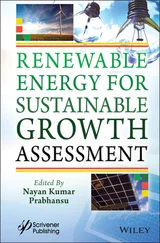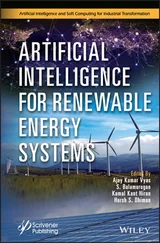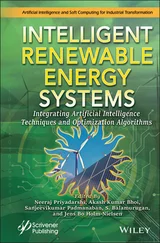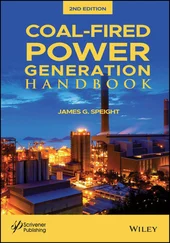James G. Speight - Encyclopedia of Renewable Energy
Здесь есть возможность читать онлайн «James G. Speight - Encyclopedia of Renewable Energy» — ознакомительный отрывок электронной книги совершенно бесплатно, а после прочтения отрывка купить полную версию. В некоторых случаях можно слушать аудио, скачать через торрент в формате fb2 и присутствует краткое содержание. Жанр: unrecognised, на английском языке. Описание произведения, (предисловие) а так же отзывы посетителей доступны на портале библиотеки ЛибКат.
- Название:Encyclopedia of Renewable Energy
- Автор:
- Жанр:
- Год:неизвестен
- ISBN:нет данных
- Рейтинг книги:3 / 5. Голосов: 1
-
Избранное:Добавить в избранное
- Отзывы:
-
Ваша оценка:
- 60
- 1
- 2
- 3
- 4
- 5
Encyclopedia of Renewable Energy: краткое содержание, описание и аннотация
Предлагаем к чтению аннотацию, описание, краткое содержание или предисловие (зависит от того, что написал сам автор книги «Encyclopedia of Renewable Energy»). Если вы не нашли необходимую информацию о книге — напишите в комментариях, мы постараемся отыскать её.
Written by a highly respected engineer and prolific author in the energy sector, this is the single most comprehensive, thorough, and up-to-date reference work on renewable energy.
Encyclopedia of Renewable Energy: Audience
Encyclopedia of Renewable Energy — читать онлайн ознакомительный отрывок
Ниже представлен текст книги, разбитый по страницам. Система сохранения места последней прочитанной страницы, позволяет с удобством читать онлайн бесплатно книгу «Encyclopedia of Renewable Energy», без необходимости каждый раз заново искать на чём Вы остановились. Поставьте закладку, и сможете в любой момент перейти на страницу, на которой закончили чтение.
Интервал:
Закладка:
Bio-oil can be used can be used directly as fuel or can be fractionated to obtain purified hydrocarbon derivatives boiling in the range of gasoline and diesel fuel – analysis of waste fish oil has shown that the main composition of fatty acids is: C 16:0(15.9% w/w), C 18:2(20.9% w/w), C 18:1(17.3% w/w), C 20:5(5.1% w/w), C 20:1(7.6% w/w), C 22:6(4.3% w/w), and C 22:1(10.4% w/w) – the first number in the carbon-related subscript is the chin length and the second number is the position of the double bond in the carbon chain. Other compounds were classified as paraffin derivatives (4.5% w/w), iso-paraffin derivatives (8.3% w/w), olefin derivatives (26.6% w/w), naphthene derivatives (6.1% w/w), and aromatic derivatives (16.9% w/w).
Tall oil is a dark, viscous, and odorous liquid that phase-separates from the used pulping liquor (alkaline black liquor) that remains after the pulping of wood chips, and contains sodium soaps of rosin and fatty acids. Fish oil is also a potentially good source of fatty acids for the production of bio-oil. In a particular study, waste fish oil was converted into bio-oil by a fast pyrolysis process at 525°C (975°F) in a continuous pilot plant reactor with a yield on the order of 72% yield. Many different chemical groups can be produced during the pyrolysis reaction, and the liquid product (bio-oil) obtained from triglyceride pyrolysis has a complex composition. This bio-oil can be used directly as fuel or can be fractionated to obtain purified hydrocarbon derivatives in the range of gasoline and diesel.
Green algae (aquatic and unicellular) biomass is also used in biodiesel production, and is an attractive source of triglycerides, as under good conditions, green algae can double its biomass in less than 24 hours. Factors such as carbon dioxide availability, sunlight, water, and space affect algal density, and the annual productivity and oil content of algae are far greater than seed crops.
One of the largest issues seems to be overall greenhouse gas emissions from the various biofuels when compared with crude oil fuels. To estimate the impacts of increases in renewable and alternative fuels on greenhouse gas emissions, the entire fuel lifecycle including fossil fuel extraction or feedstock growth, fuel production, distribution, and combustion should be taken into consideration to provide a comparison of the carbon dioxide emissions from different fuels.
It is generally accepted that biofuels have the potential to drastically lower carbon-dioxide emissions than fuels derived from crude oil, but in many instances, this is not the case. For example, ethanol made from corn requires a substantial amount of energy in terms of fertilization, irrigation, harvesting and fermentation processes and most of this energy comes from fossil fuels. As a result, some ethanol production scenarios emit more lifecycle carbon-dioxide emissions than gasoline. Cellulose-based ethanol, however, allows for more efficient and cost-effective fuel production, and the carbon footprint is decreased. Conversely, biodiesel blended into diesel at low levels reduces emissions of volatile organic compounds, carbon monoxide, particulate matter, and sulfur oxides during combustion. Further, over the full life cycle, biodiesel blends reduce carbon monoxide, particulate matter, and sulfur oxides compared with diesel.
The bulk density (related to energy density) of most solid biomass feedstocks is generally low, even after compression, and is approximately between 10 and 40% of the bulk density of most fossil fuels; however, liquid biofuels have comparable values. Since biomass materials are more reactive, with higher ignition stability, they are generally easier to gasify and thermochemically process into methanol and hydrogen (higher-value fuels). Coal ash may contain toxic metals and small amounts of other trace contaminants, while biomass ash may be used as a soil amendment to assist in replacing nutrients removed by harvest. Bioethanol possesses approximately 70% of the heating value of crude oil distillates, but its sulfur and ash contents are appreciably lower.
Ethanol has a lower energy density than gasoline, so for a given volume of gasoline, a larger volume of ethanol is needed to produce an equivalent amount of energy. Unfortunately, when ethanol is used to power vehicles, it leads to lower gas mileage, since energy density is correlated with gas mileage. Ethanol, which has approximately a 30% lower energy density than gasoline, contributes to a reduction in fuel mileage when it is mixed with gasoline, as now commonly practiced in the United States. Another problem with ethanol as an auto fuel is it is extremely hygroscopic. Ethanol is difficult to separate from water and readily absorbs water from its surrounding. This is a problem in the transport and storage of ethanol, as well as the purification of ethanol from water. Ethanol-containing fuels can easily absorb water, and decontamination (i.e., removal of water from fuel) is difficult. The difference between the properties of gasoline and ethanol also causes compatibility problems in engines. Biodiesel is the only alternative fuel to have fully completed the health effects testing requirements of the United States Clean Air Act.
The use of biodiesel in a conventional diesel engine results in substantial reduction of unburned hydrocarbon derivatives, carbon monoxide, and particulate matter compared to emissions from diesel fuel. In addition, the exhaust emissions of sulfur oxides and sulfates (major components of acid rain) from biodiesel are essentially eliminated compared to diesel. Of the major exhaust pollutants, both unburned hydrocarbon derivatives and nitrogen oxides are ozone or smog-forming precursors. The use of biodiesel results in a substantial reduction of unburned hydrocarbon derivatives. Emissions of nitrogen oxides are either slightly reduced or slightly increased depending on the duty cycle of the engine and testing methods used.
Based on engine testing, using the most stringent emissions testing protocols required by EPA for certification of fuels or fuel additives in the US, the overall ozone-forming potential of the speciated hydrocarbon emissions from biodiesel was nearly 50% less than that measured for diesel fuel. In a review published in 2009, 43the environmental indicators related to biofuel production were examined.
The postulated superior properties of agrofuels when compared with fossil fuels, as we have seen, must be weighed very carefully among the various factors of cost, environmental impact, energy density, chemical composition and availability, and life cycle of food crops. No doubt, increasing advances in technology will tip the scales in favor of biofuels.
In terms of fuel properties, one of the largest issues seems to be overall greenhouse gas emissions from the various biofuels when compared with crude oil fuels. To estimate the impacts of increases in renewable and alternative fuels on greenhouse gas emissions, it is necessary to account for the entire fuel lifecycle including fossil fuel extraction or feedstock growth, fuel production, distribution, and combustion.
The fuels are compared on an energy equivalent or Btu basis. Thus, for instance, for every Btu of gasoline which is replaced by corn ethanol, the total lifecycle greenhouse gas emissions that would have been produced from that Btu of gasoline would be reduced by 21.8%. These emissions account not only for CO 2, but also methane and nitrous oxide.
It is generally accepted that biofuels have the potential to drastically lower carbon-dioxide emissions than fuels derived from crude oil, but in many instances, this is not the case. For example, ethanol made from corn requires a substantial amount of energy in fertilization, irrigation, harvesting, and fermentation processes and most of this energy comes from fossil fuels. As a result, some ethanol production scenarios emit more lifecycle carbon-dioxide emissions than gasoline. Cellulose-based ethanol, however, allows for more efficient and cost-effective fuel production, and the carbon footprint is decreased.
Читать дальшеИнтервал:
Закладка:
Похожие книги на «Encyclopedia of Renewable Energy»
Представляем Вашему вниманию похожие книги на «Encyclopedia of Renewable Energy» списком для выбора. Мы отобрали схожую по названию и смыслу литературу в надежде предоставить читателям больше вариантов отыскать новые, интересные, ещё непрочитанные произведения.
Обсуждение, отзывы о книге «Encyclopedia of Renewable Energy» и просто собственные мнения читателей. Оставьте ваши комментарии, напишите, что Вы думаете о произведении, его смысле или главных героях. Укажите что конкретно понравилось, а что нет, и почему Вы так считаете.












